In Egyptian mythology, Ammit is a captivating and enigmatic figure, depicted as a fearsome composite creature with the head of a crocodile, lion torso, and hippopotamus hindquarters. Known as the “Devourer of the Dead,” Ammit played a pivotal role in the afterlife’s judgment. Within the Hall of Maat, where hearts were weighed against the feather of Maat, goddess of truth and justice, Ammit held sway. A deficient heart led to its consumption, denying the soul a peaceful afterlife. This article delves into Ammit’s mythological significance, offering a comprehensive exploration. Drawing from historical texts, iconography, and contemporary scholarly insights, it unveils Ammit’s multifaceted nature. Beyond her fearsome exterior, she emerges as a symbol of balance and order within the Egyptian cosmic worldview, adding depth to the tapestry of Egyptian mythology.
| Origin | Ancient Egyptian Mythology |
| Classification | Mythical Creature |
| Appearance | Composite creature with the head of a crocodile, the forelimbs of a lion, and the hind limbs of a hippopotamus |
| Role | Devourer of the hearts of the impure souls in the afterlife |
| Significance | Associated with the judgment of the dead; ensuring the purity of the deceased |
| Mythological Role | Part of the Egyptian concept of the afterlife and judgment in the Hall of Ma’at |
1. The Myth of Ammit
Historical Context
The myth of Ammit originated in the ancient Egyptian civilization, a culture renowned for its intricate belief system and rich mythological tapestry. This civilization flourished along the Nile River for over three millennia, from around 3100 BC to 30 BC. During this extensive period, the Egyptians developed a complex set of religious beliefs and practices centered around the afterlife, morality, and the balance of cosmic order. The concept of Ammit emerged in the context of these beliefs, particularly in relation to the afterlife and the judgment of souls. As a civilization that placed immense significance on the spiritual journey after death, the Egyptians envisioned Ammit as a critical figure in the process of determining a soul’s fate in the hereafter.
Mythological References
Funerary texts, such as the “Book of the Dead” and the “Book of Caverns,” notably reference Ammit’s presence. Ancient Egyptians inscribed these texts in tombs and sarcophagi to guide the deceased in the afterlife. Within these writings, Ammit assumes a fearsome and implacable form as she sits near the scales of Maat. The “Book of the Dead” specifically details the “Weighing of the Heart” ceremony, where assessors weigh the heart of the deceased against Maat’s feather. Should the heart be heavier, indicating a life led unjustly, Ammit would consume it, condemning the soul to oblivion. This depiction underscores her role as an enforcer of moral order and a deterrent against wrongdoing. Artifacts such as funerary amulets and tomb paintings also feature Ammit, further cementing her role in the collective consciousness of the ancient Egyptians as a guardian of the cosmic balance.
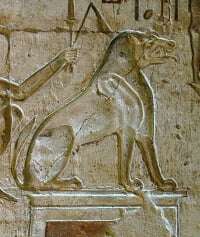
2. The Symbolism of Ammit in Egyptian Beliefs
Physical Description
Ammit’s unique and terrifying appearance is a vivid amalgamation of three powerful and feared animals in ancient Egyptian culture. She possessed the head of a crocodile, symbolizing ferocity and the power of the Nile. Her torso was that of a lion, emblematic of strength and sovereignty, while her hindquarters were those of a hippopotamus, representing danger and unpredictability in the water. This combination was not arbitrary; it reflected the Egyptians’ deep understanding and reverence for the natural world’s most formidable creatures. Ammit’s appearance was designed to inspire fear and awe, encapsulating the grave consequences of failing to live a morally upright life.
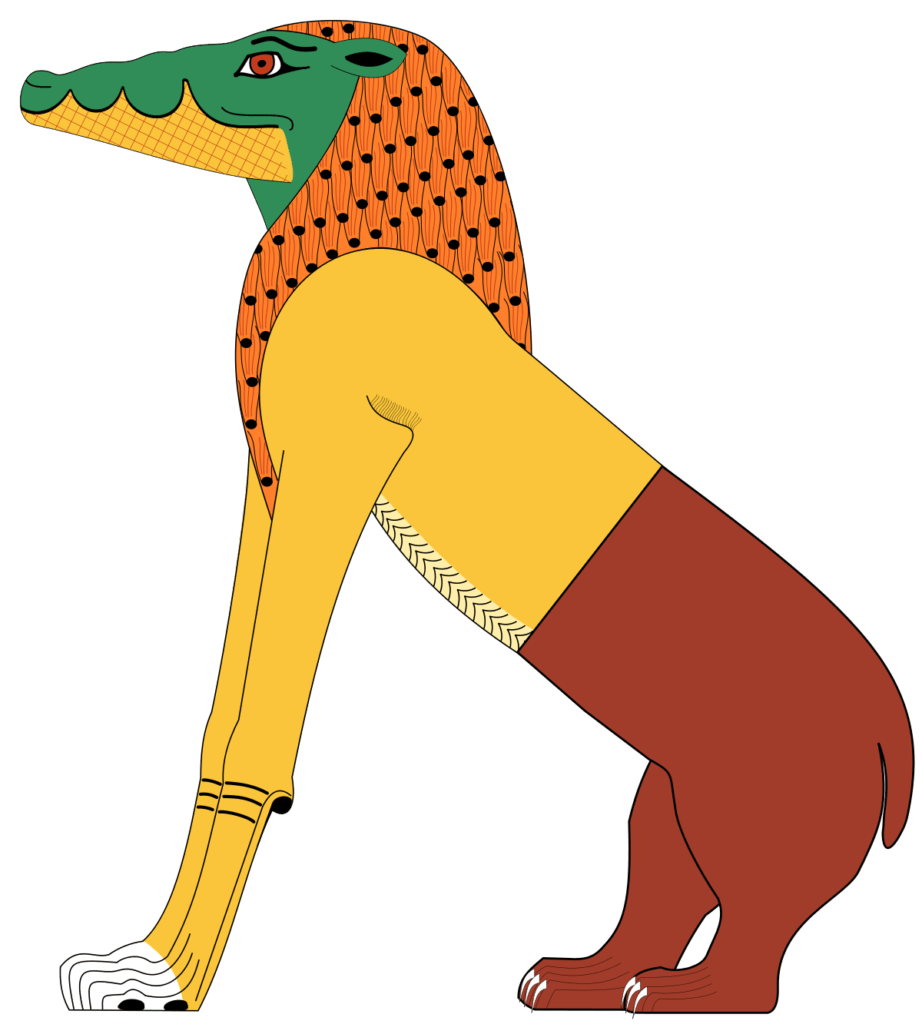
Symbolic Role
In the afterlife, Ammit’s role was both literal and symbolic. During the critical ‘Weighing of the Heart’ ceremony, she waited beside the scales of justice. If the scales tipped unfavorably, revealing a heart burdened by sin and heavier than Maat’s feather, Ammit would swiftly devour the heart. This act symbolized the annihilation of the soul’s chance for eternal peace, effectively erasing its existence. Ammit’s presence served as a stark reminder of the importance of moral integrity and the consequences of ethical failings in life.
Interpretations
To the ancient Egyptians, Ammit was more than just a fearsome creature; she embodied the essential concept of cosmic balance and justice. Her role was not that of a malevolent force but as an enforcer of Maat’s principles, ensuring that harmony prevailed in the afterlife. She was a guardian of ethical order, reinforcing the societal values of honesty and righteousness. Ammit’s existence and the fear she instilled reflect the ancient Egyptians’ emphasis on moral rectitude and the belief that one’s actions in life directly determined their fate in the afterlife. In the grand scheme of Egyptian mythology, Ammit played a crucial role in maintaining the balance between the physical world and the spiritual realm. She acted as a constant reminder of the inescapable truth that one’s deeds ultimately underwent weighing and judgment.
3. Ammit and Egyptian Religion
Connection to Gods
In the intricate pantheon of Egyptian deities, Ammit held a unique position. While not a goddess in the traditional sense, she was intimately connected to the gods of the afterlife, particularly Osiris and Anubis. Osiris, the god of the dead and the afterlife, presided over the judgment of souls in the Hall of Maat. Here, Ammit’s role was pivotal. She acted under Osiris’s authority, enforcing the verdicts passed during the weighing of the heart. Anubis, the jackal-headed god associated with mummification and the afterlife, was often depicted guiding souls to the scales where their hearts were weighed. In this context, Ammit worked alongside Anubis, serving as the final arbiter in the judgment process. This association with such significant deities highlights Ammit’s essential role in the religious and mythological framework of ancient Egypt.
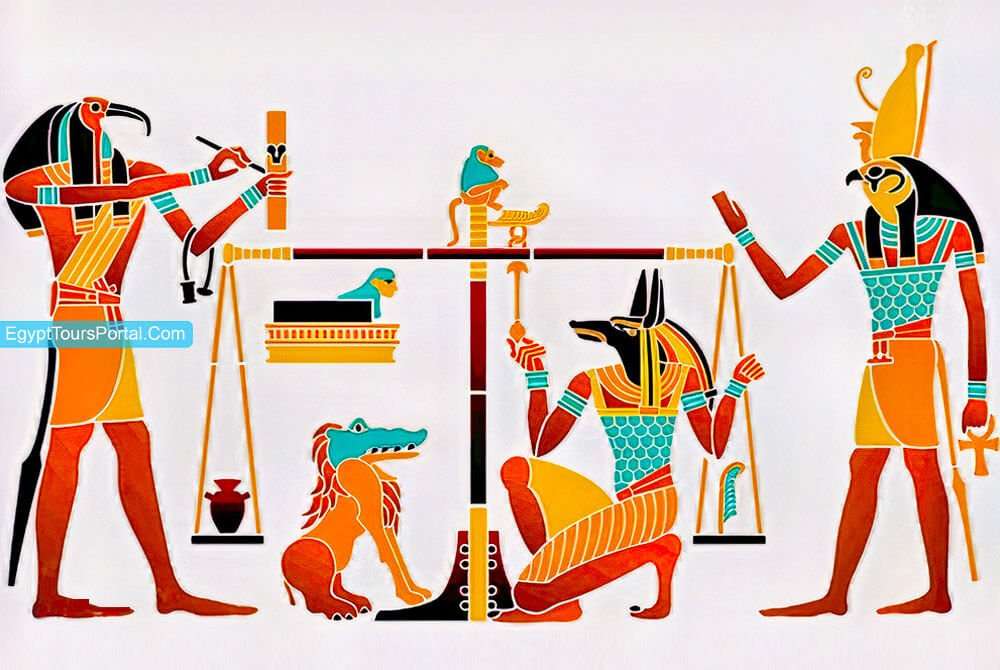
Theological Implications
Ammit’s theological significance was profound for the ancient Egyptians, as her existence directly influenced the moral and ethical conduct of society. The Egyptians believed that their actions in life determined their fate in the afterlife, and the fear of having one’s heart devoured by Ammit for unworthiness instilled a deep sense of accountability. This fear extended beyond mere death, encompassing the dread of nonexistence, a fate considered worse than death itself. The belief in a tangible judgment after death, where heart purity was paramount for eternal peace, shaped daily life. This belief system promoted the practice of Maat, emphasizing truth, balance, and order in all aspects of life. Ammit, though fearsome, played a pivotal role in maintaining social order and ethical behavior, serving as a constant reminder of the spiritual consequences of earthly actions.
4. Debunking Myths and Misconceptions
The mythology surrounding Ammit, like many ancient tales, is shrouded in misconceptions and misunderstandings, often fueled by popular media and simplified interpretations. Addressing these myths is crucial for a deeper appreciation of her role in Egyptian mythology.
1. Ammit as a Malevolent Deity
- Reality: Contrary to the belief that Ammit was a purely malevolent deity reveling in destruction, her role was more nuanced. The ancient Egyptians did not worship or venerate Ammit like other gods, but they respected her as a necessary force that maintained cosmic balance. Ammit’s actions were not driven by evil intent but rather constituted a vital part of the sacred process of upholding Maat, the principle of truth and order.
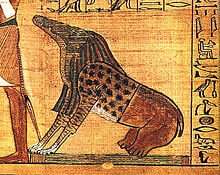
2. Role in Daily Worship
- Reality: Unlike gods such as Ra or Isis, Ammit was not the focus of daily worship or rituals. Her presence was predominantly acknowledged in the context of the afterlife and judgment. She did not have temples dedicated to her nor priests to serve her; her domain was strictly the underworld and the judgment of the dead.
3. Physical Worship of Ammit
- Reality: There is no evidence to suggest that the ancient Egyptians worshipped physical representations or idols of Ammit. Her image, primarily found in funerary texts and tomb decorations, served as a symbolic reminder rather than an object of worship.
4. Ammit as a Punisher of All Sinners
- Reality: Ammit’s role was specific to the weighing of the heart ceremony. She did not roam the earth punishing the living for their sins. Her function was confined to the afterlife, specifically to those souls whose hearts did not balance with the feather of Maat.
5. Ammit’s Role in Modern Occult
- Reality: Modern interpretations often inaccurately portray Ammit in various occult practices. However, these portrayals are a departure from her original mythological context. In ancient Egyptian beliefs, her role was clear and confined to the afterlife judgment process.
5. Exploring Archaeological Discoveries
Recent Findings
While there haven’t been groundbreaking discoveries specifically centered around Ammit, recent archaeological excavations in Egypt continue to offer broader insights into the culture’s mythology and religious practices. For instance, the unearthing of new tombs and funerary artifacts often includes depictions or references to the judgment of the dead, where Ammit’s presence is implied. These findings include detailed paintings, inscriptions, and even models of the scales used in the weighing of the heart ceremony. Such discoveries, while not directly showcasing Ammit, provide context to her role and significance in the ancient Egyptian belief system.
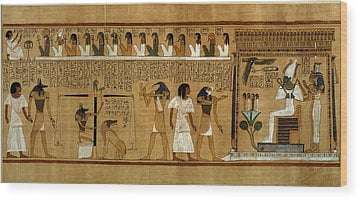
Significance of these Findings
These archaeological findings enrich our understanding of Ammit and her place in Egyptian mythology. By examining these artifacts, scholars gain a more nuanced view of the afterlife beliefs and the rituals surrounding death in ancient Egypt. The depictions of the weighing of the heart ceremony, in particular, underscore the pervasiveness of Ammit’s myth throughout the civilization. They also highlight the Egyptians’ deep concern with moral integrity and the afterlife’s consequences. Such discoveries contribute to a more comprehensive understanding of how the ancient Egyptians envisioned the afterlife’s trials and the feared yet respected role Ammit played in them. As a result, these archaeological insights allow for a more informed and detailed interpretation of Ammit’s mythology, moving beyond simplistic or sensationalized views and appreciating her as a complex symbol within the ancient Egyptian worldview.
6. Conclusion
Ammit, the “Devourer of Souls” in Egyptian mythology, stands as a poignant symbol of justice and moral order. Her unique form and role in the afterlife’s weighing of the heart ceremony highlight ancient Egypt’s deep-rooted values of truth and balance. Although not directly worshipped, her significance in guiding ethical behavior and the fate of souls in the afterlife is undeniable. Recent archaeological discoveries have further illuminated her context within Egyptian religious practices, reinforcing her impact on both ancient and modern understandings of Egyptian mythology. Ammit’s enduring legacy invites continued exploration and appreciation of the rich tapestry of Egyptian myths, offering insights into the ancient world’s complex belief systems and cultural values.
